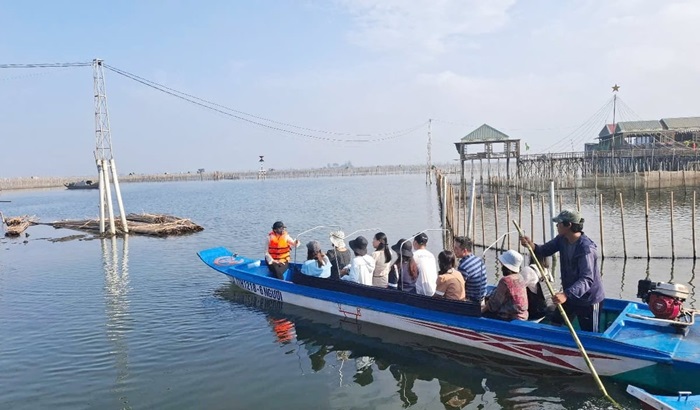The reference organisation for the conservation status of Earth's animals and plants said for the first time Thursday that most species of tuna are urgently in need of protection.
Five of eight tuna species are now threatened or nearly threatened with extinction due to overfishing, according to the Red List of Threatened Species, compiled by the Swiss-based International Union for the Conservation of Nature (IUCN).
The report is being released ahead of a July 11-15 meeting in La Jolla, California of the world's five regional fisheries management organisations (RFMOs), intergovernmental groups set up to insure that tuna fisheries remain sustainable.
Southern bluefin tuna stocks have already crashed with little hope of recovery, resulting in a status of "critically endangered", the IUCN reported.
Atlantic bluefin -- with populations in both the east and west fished to the edge of viability -- is now officially "endangered".
All bluefin tuna species "are susceptible to collapse under continued excessive fishing pressure", said Ken Carpenter, a professor at Old Dominion University in Norfolk, Virginia and the head of the IUCN's Marine Biodiversity Unit.
Other tuna species under sharp pressure from high-tech factory ships that comb international waters in search of ever-dwindling stocks include bigeye, classified as vulnerable, along with yellowfin and albacore, both ranked as "near threatened".
"This is the first time that fishery scientists, ichthyologists (fish specialists) and conservationists have come together to jointly produce an assessment of the threat facing a commercially important group of fishes," said Bruce Collette, a senior scientist at the US National Marine Fisheries Service and head of the IUCN's Tuna and Billfish Specialist Group.
All told, the new peer-reviewed classification, based on a study published Thursday in the US journal Science, assessed 61 species of tunas, bonitas, mackerels and billfishes, a group that includes swordfish and marlins.
Among billfishes, blue and white marlins are deemed vulnerable, while striped marlin has been classified as near threatened.
Up to 90 percent of many large, open-water fish have been depleted by industrial-scale fishing over the last half-century, and marine scientists warn that continued harvesting could lead to irreversible declines of some species.
Because many are at the top of the food chain, their disappearance could also disrupt delicately balanced ecosystems.
In the case of tuna species, "the most efficient way to avoid collapse is to shut down the fisheries until stocks are rebuilt to healthy levels", the researchers concluded.
"Scientific findings should not be discarded in order to maintain short-term profit," they added, a clear jab at RFMOs that have in the past consistently ignored the advice of their own scientific committees.
Five main species of tuna make up the annual worldwide catch of 4.0 to 4.5 million tonnes.
Destined mainly for supermarket shelves, skipjack (Katsuwonus pelamis) accounts for 60 percent of the total.
Yellowfin (Thunnus albacares) and bigeye (Thunnus obesus) comprise 24 and 10 percent of the global tuna market respectively.
Thunnus alalunga, better known as albacore, follows with five percent, while Atlantic Bluefin (Thunnus thynnus), highly prized in Japan for sashimi and sushi, is less than one percent.














